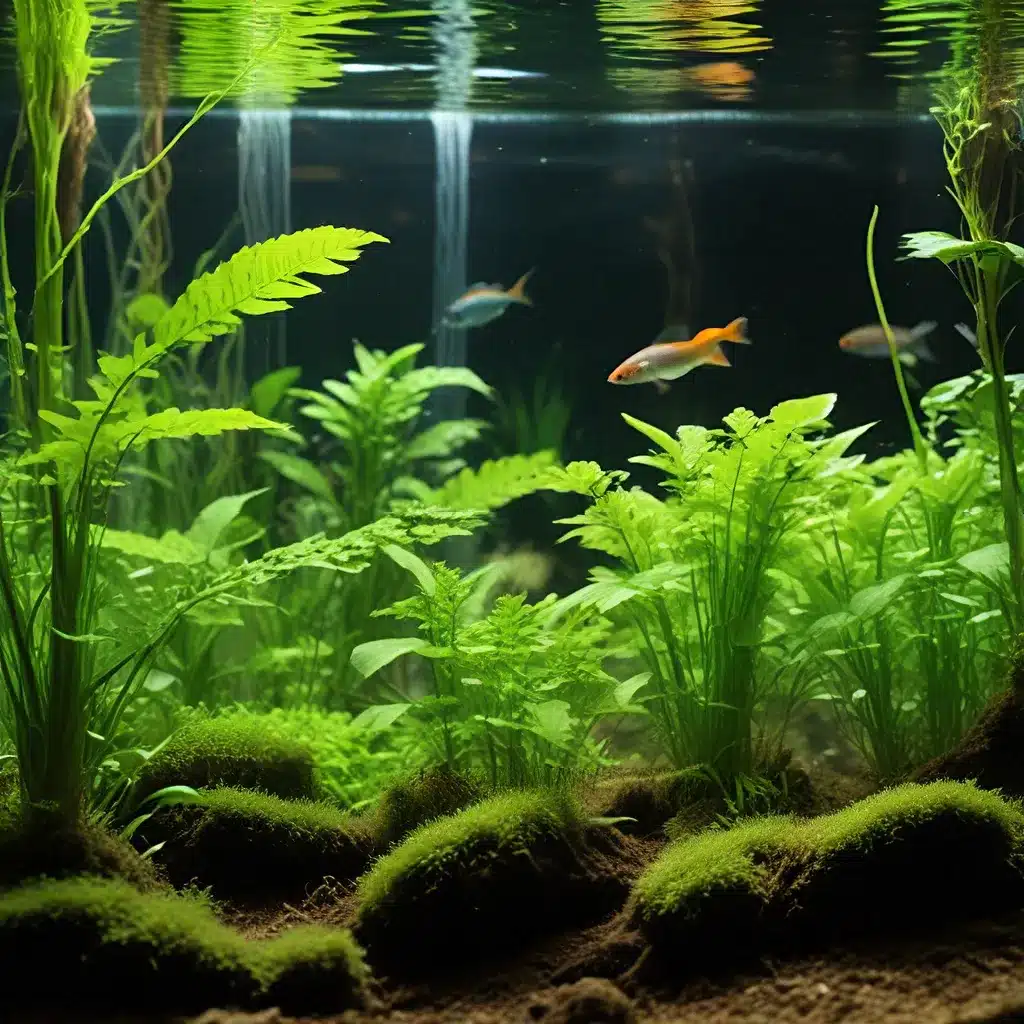
The Importance of Photosynthesis in Aquatic Plants
Photosynthesis is the fundamental biological process that drives the growth and development of aquarium plants. It is the cornerstone of a thriving planted aquarium, as it enables plants to convert light energy, carbon dioxide, and water into the essential nutrients and sugars they need to survive and thrive. By understanding the principles of plant photosynthesis, aquarium hobbyists can make informed decisions to create optimal conditions for their aquatic flora to flourish.
At its core, photosynthesis is the means by which plants harness the sun’s energy and convert it into chemical energy in the form of glucose. This glucose is then used by the plant to fuel its various metabolic processes, from root growth to leaf development. In the aquarium setting, this process is just as crucial, as submerged plants rely on photosynthesis to produce the food they need to grow and thrive.
The reproductive plant parts, such as flower buds, flowers, fruit, and seeds, are all products of this fundamental photosynthetic process. By understanding how to create the right conditions for photosynthesis to occur, aquarists can encourage their aquatic plants to reach their full potential, whether that means producing vibrant, lush foliage or stunning floral displays.
Factors Affecting Aquarium Plant Photosynthesis
Light Quantity, Quality, and Duration
One of the most critical factors influencing plant photosynthesis is the amount, type, and duration of light available to the aquarium inhabitants. Light quantity refers to the intensity or concentration of light reaching the plants, which can vary significantly depending on the season, depth of the aquarium, and use of supplemental lighting. Aquarists can manipulate light quantity by surrounding plants with reflective materials, using shading devices, or adjusting the placement and intensity of their aquarium lighting.
Light quality, on the other hand, refers to the specific wavelengths of light that plants absorb and utilize most effectively for photosynthesis. Aquarium plants primarily absorb blue and red light, which are responsible for promoting vegetative growth and flowering, respectively. Choosing the right lighting source, such as fluorescent or LED fixtures with a balanced spectrum, can greatly enhance photosynthetic efficiency.
The duration of light exposure, or photoperiod, is also a crucial factor in plant growth and development. Many aquatic plants are classified as short-day or long-day species, meaning they require specific light/dark cycles to trigger flowering and other reproductive processes. Manipulating the photoperiod can be a valuable tool for aquarists to encourage their plants to thrive and even bloom in the confines of the aquarium.
Temperature and Water Chemistry
In addition to light, temperature and water chemistry also play vital roles in aquarium plant photosynthesis and overall health. Temperature influences a wide range of plant processes, including photosynthesis, respiration, and nutrient uptake. Maintaining the optimal temperature range for a particular plant species is essential for promoting vigorous growth and minimizing stress.
The chemical composition of the aquarium water, particularly the levels of carbon dioxide (CO2), nutrients, and dissolved oxygen, can also significantly impact photosynthesis. Aquatic plants require a delicate balance of these elements to function at their best. Careful management of water parameters and the use of appropriate fertilizers and CO2 supplementation can help ensure that plants have the resources they need to thrive.
Aquascaping for Optimal Photosynthesis
Beyond the individual factors affecting photosynthesis, the overall aquascape design can also play a crucial role in maximizing the photosynthetic potential of aquarium plants. Thoughtful plant placement, substrate selection, and water circulation can all contribute to creating an environment that supports robust, healthy plant growth.
For example, taller, background plants can be strategically positioned to take advantage of the higher light intensity near the water surface, while shorter, foreground species may require more targeted lighting to ensure they receive sufficient illumination. Substrate composition and depth can also influence nutrient availability and root development, which, in turn, impact a plant’s ability to photosynthesize effectively.
Proper water circulation is another essential consideration for promoting photosynthesis. Adequate water movement helps to distribute nutrients, carbon dioxide, and dissolved oxygen evenly throughout the aquarium, ensuring that all plants have access to the resources they need to thrive. Careful placement of power heads, return pipes, and other water flow-enhancing devices can optimize these conditions.
Monitoring and Maintaining Aquarium Plant Photosynthesis
Monitoring the health and performance of aquarium plants is a crucial aspect of maintaining optimal photosynthesis. Observing signs of stress, such as stunted growth, discoloration, or algae buildup, can help aquarists identify and address any issues that may be hindering photosynthesis. Regular testing of water parameters, such as pH, alkalinity, and nutrient levels, can also provide valuable insights into the overall health of the aquarium ecosystem and its impact on plant photosynthesis.
Adjusting lighting, water chemistry, and aquascape design as needed can help aquarists create the ideal conditions for their aquatic plants to thrive. By staying attuned to the unique needs of each plant species and making thoughtful, data-driven decisions, aquarium enthusiasts can cultivate lush, vibrant planted aquariums that showcase the beauty and diversity of aquatic flora.
Ultimately, understanding the principles of plant photosynthesis is the key to unlocking the full potential of your aquarium’s aquatic vegetation. By mastering the art of creating the right conditions for this fundamental biological process to occur, you can transform your aquarium into a thriving, self-sustaining ecosystem that is a joy to behold.

